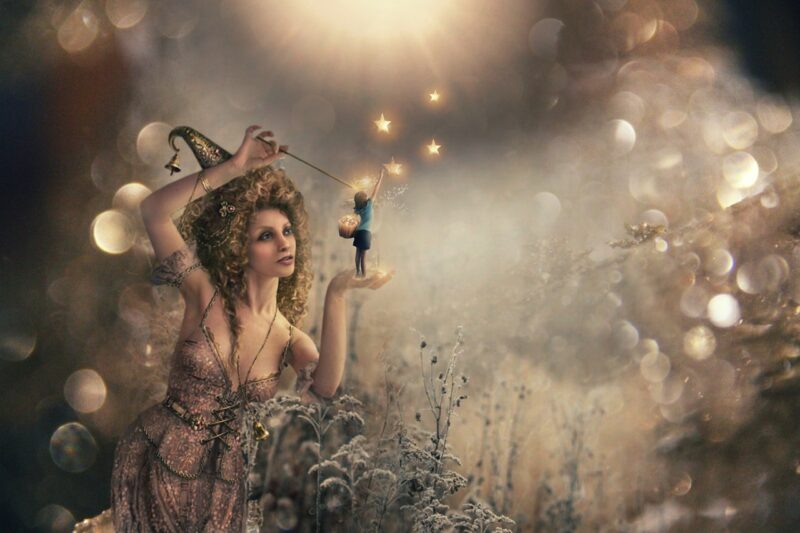The Evolution of Mythical Creatures in Legends and How They Reflect the Fears and Hopes of Societies
November 17, 2024

Mythical creatures have captivated human imagination for centuries, serving as potent symbols that reflect the fears, hopes, and aspirations of societies throughout history. These creatures are not simply figments of our imagination; they embody the cultural values, beliefs, and existential dilemmas of the communities that created them. From dragons to unicorns, the evolution of mythical beings offers a fascinating glimpse into the psyche of different civilizations, showcasing how these legends not only entertain but also resonate with the human experience in profound ways.
1. Mythical Creatures: A Historical Overview
Mythical creatures have appeared in various forms across cultures, often serving as cautionary tales or moral lessons. The roots of these legends can be traced back to ancient civilizations. For example, the Mesopotamian god Enkidu, a wild man created from clay, reflects the duality of humanity – civilization versus nature. Similarly, creatures like the griffin, which combines the majesty of the eagle and the strength of the lion, symbolize the merging of different elements to create something more powerful.
In ancient Greece, mythology was rich with fantastical beings, from sirens drawing sailors to their doom to centaurs representing the struggle between civilized and primal instincts. These stories were not simply entertainment; they served as vehicles for exploring complex themes such as love, power, and morality.
2. The Role of Mythical Creatures in Society
Throughout history, mythical creatures have played pivotal roles in shaping societal norms and values. They serve as allegories for human experiences, often addressing the fears and aspirations of the societies they inhabit:
- Fear and Danger: Creatures like dragons and hydras represent chaos, destruction, and the unknown. In many cultures, these beings personify fears of invasion, natural disasters, or personal failure. For instance, the dragon in medieval Europe often symbolized peril and moral challenges, requiring a brave knight to confront it, representing the internal battle against one’s fears.
- Hope and Transformation: Conversely, creatures such as the phoenix offer a message of rebirth and resilience. Rising from its ashes, the phoenix symbolizes hope and the capacity for societies to rejuvenate after periods of darkness or despair. This reflects the human desire for renewal and the belief that it is possible to rise above adversity.
- Cultural Identity: Mythical creatures often serve as cultural icons, reflecting the unique characteristics of a society. For instance, the qilin in Chinese mythology, a hybrid of various animals, represents good fortune and prosperity, resonating with the values of harmony and virtue embedded in Chinese culture. Such symbols unite communities and foster a sense of belonging and identity.
3. The Evolution of Mythical Creatures Through Time
As human societies evolve, so do their mythical creatures, often reflecting contemporary fears, values, and aspirations. At different historical junctures, these creatures take on new forms:
- Industrial Revolution: During this period, the rise of machines and urbanization led to anxieties about humanity’s place in nature. Creatures like the mechanical monsters in literature symbolized fears of dehumanization and loss of connection with the natural world. The golem from Jewish folklore, a creature imbued with life through human effort, represented the potential for unchecked technological advancement and the ethical dilemmas surrounding it.
- Modern Era: In today’s world, mythical creatures have adapted to reflect contemporary issues such as environmental degradation and social injustice. The mermaid, for example, has been reinterpreted as a symbol of environmental activism, raising awareness around the fragility of the oceans and the plight of marine life amidst climate change. This nuanced retelling embodies collective fears related to environmental exploitation and loss of biodiversity.
As new challenges emerge, mythical creatures continue to evolve, reinforcing their relevance in modern discourse.
4. The Psychological Perspective: What Do Mythical Creatures Reveal About Us?
Psychologists have long studied the symbolism attributed to mythical creatures, emphasizing how they mirror human emotions and instincts. Carl Jung, a prominent psychologist, posited that mythical creatures represent archetypes of the collective unconscious. They convey basic human experiences and emotions such as fear, love, and transformation.
For instance, the werewolf embodies the struggle between civilization and the primal urges that reside within us. It explores themes of duality, representing the fear of losing control to one’s darker instabilities. Similarly, the unicorn symbolizes purity and transcendence but also reflects the human pursuit of idealism and the often-elusive nature of perfection.
Understanding how mythical creatures resonate psychologically can provide valuable insights into societal issues and the collective behavior of communities.
5. Conclusion: The Enduring Power of Mythical Creatures
The evolution of mythical creatures in legends transcends mere storytelling; they are profound reflections of the human experience. By delving into their origins and cultural significance, we uncover a tapestry woven with threads of hope, fear, and aspiration. As societies continue to develop and face new challenges, these mythical beings will likely persist, adapting and morphing to resonate with future generations.
In a world where uncertainties abound, the legends of mythical creatures serve as reminders of our resilience, creativity, and capacity for transformation. They are not just tales told around campfires or depicted in literature; they are mirrors that reflect our values and existential questions, bridging the gap between our fears and hopes, past and present.







